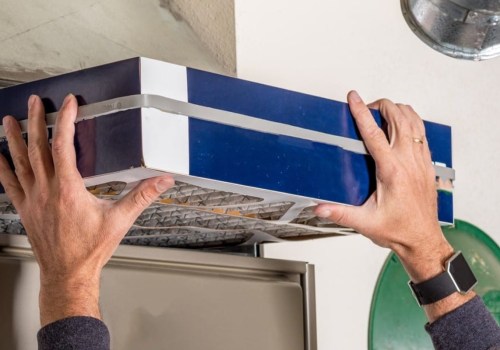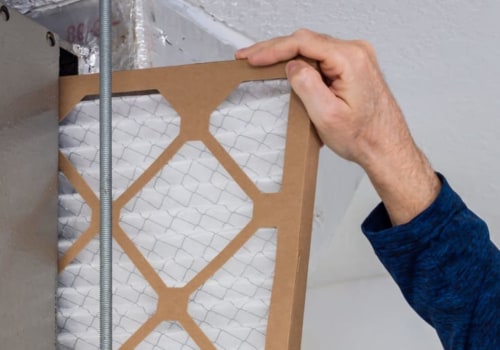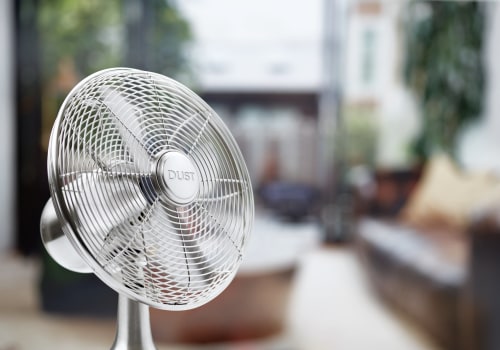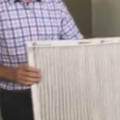MERV Ratings For Air Filters
Air filters play a crucial role in maintaining indoor air quality by capturing and removing various particles, pollutants, and allergens from the air. One important aspect to consider when selecting an air filter is its MERV rating. MERV stands for Minimum Efficiency Reporting Value, which is a standardized measurement system used to rate the effectiveness of filters in removing airborne particles. This article provides an analytical overview of MERV ratings for air filters, examining how they are determined, their scale and significance, as well as the benefits and considerations associated with higher MERV ratings.
In the first section of this article, we will delve into what exactly MERV ratings entail and how they are determined. Understanding the intricacies of this rating system is essential in comprehending the effectiveness of different air filters. Following that, we will explore the MERV rating scale itself and discuss its significance in evaluating filtration efficiency. Higher MERV ratings indicate greater particle capture capabilities; however, it is important to consider other factors such as airflow restrictions and specific filtration needs when choosing an air filter for a particular environment. By delving into these technical aspects of MERV ratings for air filters, readers will gain a comprehensive understanding of how these ratings contribute to maintaining optimal indoor air quality.
What are MERV Ratings?
MERV ratings serve as a crucial tool for consumers in determining the efficiency and effectiveness of air filters in removing harmful particles from indoor air, thereby promoting healthier living environments. The MERV rating system, which stands for Minimum Efficiency Reporting Value, was developed by the American Society of Heating, Refrigerating, and Air-Conditioning Engineers (ASHRAE) to provide a standardized method for evaluating the performance of air filters. The importance of MERV ratings lies in their ability to help consumers make informed decisions when choosing air filters that best suit their specific needs.
When comparing MERV ratings, it is essential to understand that higher numbers indicate better filtration capabilities. The scale ranges from 1 to 20, with 1 being the lowest and 20 being the highest rating. Air filters with lower MERV ratings are typically less effective at capturing smaller particles such as pollen, dust mites, and pet dander. On the other hand, those with higher MERV ratings can efficiently remove even microscopic particles like bacteria and viruses from the air.
However, it is important to note that selecting an air filter solely based on its MERV rating may not always be appropriate. Factors such as airflow resistance and compatibility with HVAC systems should also be taken into consideration. A high-MERV-rated filter may restrict airflow if used in a system designed for lower-rated filters or have adverse effects on energy consumption. Therefore, it is advisable to consult professionals or refer to manufacturers' guidelines to ensure the proper selection and installation of air filters.
Understanding the significance of MERV ratings is crucial when considering air filter options for maintaining healthy indoor environments. These ratings allow consumers to compare different filters based on their efficiency in removing harmful particles from the air. However, it is essential to consider other factors besides just the MERV rating when selecting an appropriate filter for your specific needs. By doing so, individuals can ensure optimal indoor air quality while promoting overall well-being.
How are MERV Ratings Determined?
The determination of the efficacy of air filtration systems is achieved through a standardized process that assesses the efficiency and performance of these systems. This process involves determining the MERV (Minimum Efficiency Reporting Value) ratings, which play a crucial role in evaluating air quality. MERV ratings are determined by subjecting air filters to various tests and measurements, ensuring their ability to capture different sizes of airborne particles. These ratings provide valuable information about how well an air filter can improve indoor air quality.
To determine MERV ratings, air filters undergo rigorous testing using specialized equipment and procedures. The tests involve introducing particles of various sizes into the airflow and measuring the filter's ability to capture them. The size range of particles used during testing varies from less than 0.3 micrometers to 10 micrometers or larger. By exposing the filters to these particles, researchers can evaluate their efficiency at capturing contaminants commonly found in indoor environments.
The importance of MERV ratings in air filtration cannot be overstated. These ratings directly impact indoor air quality by indicating an air filter's effectiveness in removing particulate matter from the airstream. Higher-rated filters with higher MERV values are capable of capturing smaller particles more efficiently, thus providing cleaner and healthier indoor environments. It is essential for individuals and organizations responsible for maintaining clean air spaces to consider MERV ratings when selecting appropriate filters for their specific needs.
Determining MERV ratings involves subjecting air filters to comprehensive testing procedures that measure their efficiency at capturing airborne particles across various size ranges. These ratings play a significant role in assessing the impact an air filter has on improving indoor air quality. Understanding the importance of MERV ratings allows individuals and organizations to make informed decisions when choosing suitable filtration systems for maintaining clean and healthy indoor environments.
Understanding the MERV Rating Scale
The MERV rating scale provides a standardized and objective measure of the effectiveness of air filtration systems in capturing different sizes of particles present in indoor environments. It is a numerical scale that ranges from 1 to 20, with higher numbers indicating greater efficiency in filtering out smaller particles. The MERV rating takes into account the ability of an air filter to capture common airborne contaminants such as dust, pollen, pet dander, mold spores, and bacteria.
Understanding the MERV rating scale is crucial for consumers when selecting air filters for their HVAC systems. A higher MERV rating means that the air filter can remove more airborne pollutants from the indoor environment. This is especially important for individuals with allergies or respiratory conditions who may be more sensitive to these contaminants. Additionally, proper installation and regular maintenance of air filters are essential to ensure optimal performance and longevity.
Regular maintenance involves replacing air filters according to manufacturer recommendations or sooner if they become visibly dirty or clogged. Neglecting proper maintenance can lead to reduced airflow through the HVAC system, decreased efficiency in removing airborne particles, and increased strain on the system itself. Furthermore, improper installation can result in air leaks around the filter frame or gaps between the filter and housing unit. These issues can compromise the effectiveness of the filtration system and allow unfiltered air to circulate throughout the indoor space.
Understanding the MERV rating scale is essential for choosing an appropriate air filter that effectively captures airborne pollutants. Higher MERV ratings indicate better filtration capabilities, providing benefits for individuals with allergies or respiratory conditions. However, it is equally important to prioritize regular maintenance and proper installation to ensure optimal performance and longevity of air filters within HVAC systems. By adhering to these practices, individuals can improve indoor air quality and create a healthier living environment.
Benefits of Higher MERV Ratings
Higher efficiency in capturing smaller particles is one of the key advantages associated with air filtration systems that have higher MERV ratings. The MERV rating scale, which stands for Minimum Efficiency Reporting Value, is used to measure the effectiveness of an air filter in removing airborne particles from the air. A higher MERV rating indicates a more efficient filter that can capture smaller particles, such as dust mites, pollen, and pet dander. This increased efficiency provides several benefits for indoor air quality and overall health.
Improved Air Quality: Airborne particles can have a significant impact on indoor air quality and can exacerbate respiratory conditions such as asthma or allergies. Filters with higher MERV ratings are designed to trap a greater number of these harmful particles, resulting in cleaner and healthier indoor air. By reducing the presence of allergens and other pollutants, individuals may experience fewer symptoms related to poor indoor air quality.
Reduced Risk of Respiratory Issues: Higher MERV-rated filters can effectively remove smaller particles that are known to cause respiratory issues. These filters can catch fine particulate matter like bacteria, mold spores, and even some viruses. By minimizing exposure to these contaminants, individuals may experience a reduction in respiratory-related illnesses and enjoy better overall lung health.
Extended Lifespan: Although filters with higher MERV ratings typically cost more than lower-rated ones, they often last longer due to their improved efficiency in trapping airborne particles. With superior filtration capabilities, these filters are less likely to become clogged quickly and require frequent replacement. This not only saves money but also reduces maintenance efforts for homeowners or facility managers.
Choosing an air filter with a higher MERV rating offers numerous benefits in terms of improved efficiency and better indoor air quality. Higher-rated filters excel at capturing smaller particles that can negatively impact health by causing allergies or triggering respiratory issues. Additionally, they tend to last longer due to their ability to trap contaminants effectively. By investing in air filters with higher MERV ratings, individuals can enjoy cleaner air and better overall respiratory health.
Considerations When Choosing an Air Filter
When selecting an air filter, it is important to carefully consider various factors that can impact its effectiveness and suitability for specific indoor environments. One of the key considerations is the air filter's effectiveness in removing contaminants from the air. This is typically measured by its MERV (Minimum Efficiency Reporting Value) rating. Higher MERV ratings indicate a greater ability to capture smaller particles, such as pollen, dust mites, pet dander, and mold spores. Therefore, when choosing an air filter, it is crucial to assess the specific needs of your indoor environment in terms of particle size and potential pollutants.
Another important consideration when choosing an air filter is cost comparison. While higher MERV-rated filters tend to be more effective at capturing airborne particles, they also tend to be more expensive. It is essential to strike a balance between cost and efficiency based on your specific needs and budget. In some cases, a lower MERV-rated filter may suffice if there are no significant concerns about allergies or asthma within the household.
Furthermore, it is worth noting that higher MERV-rated filters can potentially strain HVAC systems due to their increased resistance to airflow. This can lead to reduced energy efficiency and increased utility bills. Therefore, it is advisable to consult with HVAC professionals or refer to manufacturer recommendations before selecting an air filter with a high MERV rating for your system. In conclusion, considering both air filter effectiveness and cost comparison are vital steps in determining the most suitable option for maintaining clean indoor air quality while ensuring optimal performance of your HVAC system.
Common Misconceptions About MERV Ratings
One common misconception regarding the effectiveness of air filter selection is the misunderstanding surrounding MERV ratings and their impact on indoor air quality. MERV stands for Minimum Efficiency Reporting Value, and it measures how well an air filter can remove particles from the air. However, many people mistakenly believe that a higher MERV rating automatically means better filtration and improved air quality. This is not necessarily true, as there are other factors to consider when choosing an air filter.
To clarify this misconception, it is important to understand that different types of contaminants require different filtration methods. A high-MERV-rated filter may be effective at capturing large particles like dust and pet dander, but it might not be as efficient in removing smaller particles such as bacteria or viruses. Therefore, selecting an air filter solely based on its MERV rating may not provide optimal protection against specific pollutants.
Another misconception is that once you have chosen a high-MERV-rated filter, you no longer need to worry about regular maintenance or filter changes. However, regardless of the MERV rating, all filters will eventually become clogged with captured particles over time. If not replaced regularly, these clogged filters can impede airflow and decrease overall efficiency, leading to reduced effectiveness in removing airborne contaminants. Therefore, regular inspection and timely replacement of filters are essential for maintaining proper airflow and ensuring long-term air filter effectiveness.
While MERV ratings play a crucial role in determining an air filter's ability to capture certain particles from the air, they should not be the sole factor considered when selecting a filter for improving indoor air quality. Other factors such as specific contaminant removal requirements should also be taken into account. Moreover, regardless of the chosen MERV rating, regular maintenance and timely replacement of filters are imperative for ensuring continued effectiveness in removing airborne pollutants and maintaining good indoor air quality.
Maintenance and Replacement of Air Filters
Regular inspection and timely replacement of air filter media are crucial maintenance practices to ensure optimal airflow and sustained efficiency in capturing airborne contaminants. The lifespan of an air filter depends on various factors such as the type of environment, the level of pollutants present, and the MERV rating of the filter itself. However, a general guideline is to replace filters every three months or as recommended by the manufacturer. Neglecting regular maintenance can lead to reduced airflow, decreased filtration efficiency, and increased energy consumption.
To effectively maintain air filters, it is important to follow best practices. Firstly, inspecting filters regularly is essential to determine their condition and performance. This can be done visually by checking for dirt buildup or physical damage. Additionally, pressure drop measurements can be taken across the filter media using a manometer to assess its efficiency. Filters with high-pressure drops may indicate a need for replacement.
When replacing air filters, it is vital to choose ones compatible with your HVAC system's specifications. Selecting filters with an appropriate MERV rating ensures efficient filtration without putting excessive strain on the system's airflow capacity. Higher MERV ratings generally capture smaller particles but also restrict airflow more than lower-rated filters. Therefore, finding a balance between filtration efficiency and adequate airflow is crucial.
Regular inspection and timely replacement of air filter media are imperative for maintaining optimal indoor air quality and system performance. Adhering to best practices such as inspecting filters regularly and selecting appropriate MERV-rated replacements will help prolong their lifespan while ensuring efficient capture of airborne contaminants. By following these guidelines, individuals can create healthier living environments while promoting energy efficiency in HVAC systems.
Other Factors Affecting Indoor Air Quality
Another important aspect to consider in maintaining optimal indoor air quality is the impact of external factors on the overall air composition and purity within a given environment. Ventilation systems play a crucial role in controlling the quality of indoor air by facilitating the exchange of stale, polluted air with fresh outdoor air. Properly designed and maintained ventilation systems can effectively remove contaminants, such as volatile organic compounds (VOCs), carbon dioxide (CO2), and other airborne pollutants, thus improving indoor air quality. Inadequate ventilation can lead to a buildup of these pollutants, which can have detrimental effects on human health.
In addition to ventilation systems, household cleaning products also contribute significantly to the overall indoor air quality. Many conventional cleaning products contain chemicals that emit harmful VOCs into the air when used or stored improperly. These VOCs include formaldehyde, ammonia, and bleach, which are known respiratory irritants and can trigger asthma symptoms in sensitive individuals. It is essential to choose cleaning products that are labeled as low-VOC or non-toxic and properly ventilate the area while using them to reduce exposure to harmful chemicals.
Considering both ventilation systems and household cleaning products is vital for maintaining good indoor air quality. Ensuring proper ventilation not only helps remove contaminants but also controls humidity levels, preventing mold growth that further deteriorates air quality. Using eco-friendly cleaning products reduces the emission of harmful VOCs into the environment. By understanding these factors and taking appropriate measures, individuals can create a healthier living space with improved indoor air quality for themselves and their families.
Industry Standards and Regulations
Industry standards and regulations play a crucial role in ensuring the compliance and effectiveness of measures taken to maintain optimal indoor air quality. These standards are developed by regulatory bodies, such as the Environmental Protection Agency (EPA) in the United States, to establish guidelines for various aspects of indoor air quality management. Compliance with these standards is essential for industries to prevent potential health risks associated with poor indoor air quality.
One key aspect of industry compliance with indoor air quality standards is the regular assessment and monitoring of air filtration systems. Air filters are designed to remove pollutants and contaminants from the air, improving its overall quality. However, if these filters are not regularly inspected, replaced, or maintained according to industry standards, they may become less effective over time. This can lead to compromised indoor air quality and an increased risk of respiratory problems or other health issues.
Furthermore, adherence to industry regulations is also essential for minimizing exposure to hazardous substances that could impact human health. For example, certain industries may produce or release chemicals into the environment that can negatively affect indoor air quality if not properly controlled. By implementing strict regulations on emissions and providing guidelines on safe handling procedures for hazardous materials, these industries can reduce the potential health risks associated with their operations.
Industry standards and regulations play a pivotal role in maintaining optimal indoor air quality by ensuring compliance with established guidelines. Regular assessment and maintenance of air filtration systems are necessary to ensure their effectiveness in removing pollutants from the air. Additionally, strict adherence to regulations concerning hazardous substances helps minimize exposure and reduces potential health risks associated with poor indoor air quality. Compliance with these industry standards is crucial for safeguarding public health and well-being in various settings where people spend significant amounts of time indoors.
Frequently Asked Questions
Can I use an air filter with a high MERV rating in my HVAC system?
Air filters with a high MERV rating can indeed be used in HVAC systems. However, it is important to consider the specific requirements of the system and its compatibility with higher-rated filters. HEPA filters are known for their high efficiency in capturing small particles and allergens, ensuring improved air quality.
On the other hand, MERV ratings indicate the filter's ability to trap various sizes of particles. While higher MERV ratings offer better filtration performance, they can also impact energy consumption by restricting airflow through the system. Therefore, when using air filters with a high MERV rating in an HVAC system, it is crucial to ensure that the system is designed to handle such filters without compromising its efficiency or causing unnecessary strain on energy consumption.
What is the difference between a MERV rating and a HEPA rating?
HEPA filters and MERV filters are both used in air filtration systems, but they have distinct differences in their effectiveness and performance. HEPA (High-Efficiency Particulate Air) filters are highly efficient at capturing small particles as small as 0.3 microns with an efficiency of 99.97%. They are commonly used in medical facilities, cleanrooms, and environments where the highest level of air filtration is necessary. On the other hand, MERV (Minimum Efficiency Reporting Value) filters are designed to measure the effectiveness of air filters on a scale from 1 to 20.
While some high MERV-rated filters can provide comparable performance to HEPA filters, they generally have lower efficiency in capturing smaller particles compared to true HEPA filters. However, MERV filters offer a wider range of options with varying levels of filtration efficiency suitable for different HVAC systems and environments. It is important to note that higher MERV ratings may also lead to increased resistance to airflow, potentially impacting the overall performance of an HVAC system. Therefore, when considering whether to use a HEPA or MERV filter, it is essential to evaluate specific requirements, such as the level of particle capture needed and system compatibility, while also considering the benefits and drawbacks associated with each option.
How often should I replace my air filter?
To choose the right air filter for your home, several factors should be considered. Firstly, it is essential to assess the specific needs of your household. If you have pets or family members with allergies or respiratory conditions, a higher MERV (Minimum Efficiency Reporting Value) rating is typically recommended as it can capture smaller particles and allergens more effectively.
Additionally, considering the size of your home and its ventilation system is crucial in selecting an appropriate filter. Regularly monitoring signs that indicate it's time to replace your air filter is equally important. These signs may include reduced airflow from vents, increased dust levels in your home, or a noticeable decrease in indoor air quality. It is generally advised to replace air filters every three months but checking them monthly and adjusting the replacement frequency based on their condition is advisable for optimal performance and improved indoor air quality.
Are there any health risks associated with using air filters with higher MERV ratings?
The use of air filters with higher MERV ratings may potentially pose health risks. While these filters are more effective in capturing smaller particles, such as dust, pollen, and pet dander, they can also restrict airflow and increase pressure drop across the HVAC system. This can lead to reduced indoor air quality and decreased system efficiency.
Additionally, high MERV filters have a greater tendency to become clogged quickly, requiring more frequent replacement or cleaning. If not properly maintained, this can result in the growth of microorganisms on the filter surface and the potential release of harmful substances into the air. Therefore, it is important to carefully balance the effectiveness of high MERV filters with their potential negative impacts on airflow and maintenance requirements to minimize any associated health risks.
Can air filters with lower MERV ratings still effectively improve indoor air quality?
Air filters with lower MERV ratings can still effectively improve indoor air quality to a certain extent. While it is true that higher MERV-rated filters can capture smaller particles, lower MERV-rated filters are still capable of filtering out larger particles such as dust and pollen. The effectiveness of an air filter in improving indoor air quality depends on various factors including the specific pollutants present, the size of the particles, and the airflow rate through the filter.
Therefore, even though lower MERV-rated filters may not be as efficient in capturing small particles, they can still provide some level of filtration and contribute to overall improved air quality. However, it is important to note that relying solely on lower MERV-rated filters may not be sufficient for environments with high levels of fine particulate matter or specific allergens. It is advisable to consider other factors such as ventilation systems and source control measures for comprehensive indoor air quality management.
Conclusion
In conclusion, MERV ratings play a crucial role in determining the effectiveness of air filters in improving indoor air quality. These ratings are determined through rigorous testing and evaluation processes that assess the filter's ability to capture particles of varying sizes. The MERV rating scale provides a standardized way to compare different filters based on their efficiency in removing airborne contaminants.
Higher MERV ratings offer several benefits, including improved filtration and reduced exposure to allergens, pollutants, and other harmful particles. However, it is important to consider certain factors when choosing an air filter, such as the specific needs of the space and the HVAC system's compatibility with higher-rated filters.
While misconceptions about MERV ratings exist, understanding their true meaning can help individuals make informed decisions about selecting appropriate air filters for their homes or workplaces. Regular maintenance and timely replacement of air filters are essential for optimal performance and sustained indoor air quality improvement.
It is worth noting that MERV ratings are just one aspect to consider when addressing indoor air quality concerns. Other factors such as ventilation systems, humidity control measures, and regular cleaning practices also contribute significantly to maintaining healthy indoor environments.










